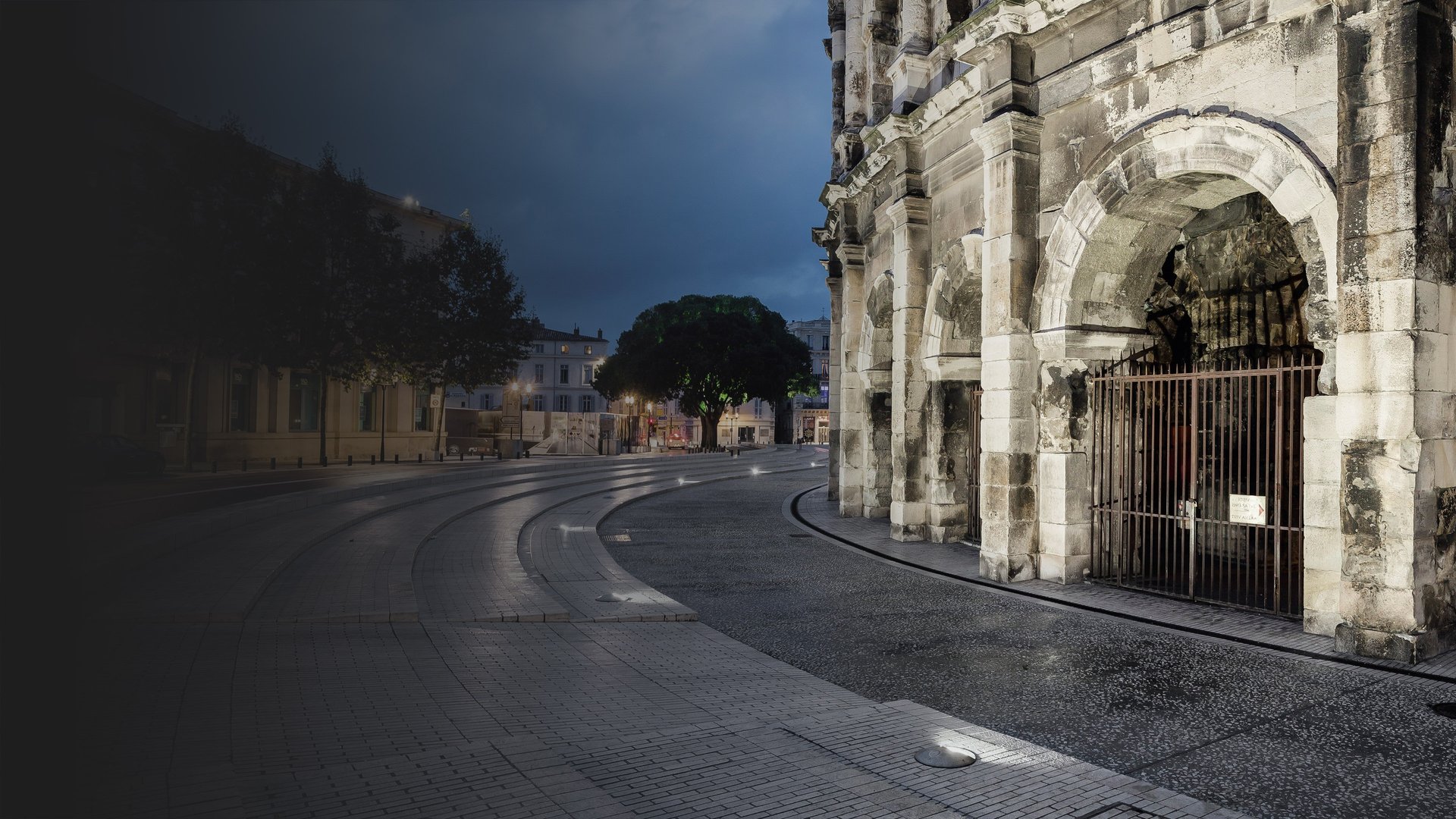

Szczególny urok jednego z największych kompleksów pałacowych w Europie, a zarazem jednego z budynków o największej wartości historycznej na kontynencie, sięga daleko poza Francję.
Celem projektu oświetlenia barokowej budowli było nadanie Pałacowi Wersalskiemu, który w najdłuższym miejscu ma ponad pół kilometra, efektu dostojności widocznego z daleka, nawet w ciemności.
Obiekt wpisany na Listę Światowego Dziedzictwa UNESCO stanowił wzór dla niezliczonych budowli pałacowych aż do XIX wieku. Godną prezentację zapewniają między innymi wyjątkowe oprawy LED wpuszczane w podłoże firmy BEGA. Dwie niemal identyczne oprawy, które trudno odróżnić z zewnątrz, a które pozwalają stworzyć spójny obraz, spełniają bardzo różne zadania oświetleniowe wokół pałacu i na terenach parkowych.
Reflektory wpuszczane w podłoże stanowiące wraz z rzeźbami i roślinami element inscenizacji świetlnych rozległych terenów parkowych, zostały wykonane na zamówienie. Specjalne reflektory zapewniające wąski rozsył światła oświetlają detale licznych rzeźb, z wyczuciem wpisując je w kontekst ogrodów i misternie przyciętej roślinności.



Avoiding glare in urban environments
Dwie koncepcje oświetlenia zapewniające równomierne światło, uwzględnienie wymagań mieszkańców i ochrony owadów
Lighting concepts in urban spaces can be realised for spatially limited areas, as well as for structures with larger dimensions:
In addition to the task of appropriately staging the illumination, the conditions of the immediate surroundings must be taken into account. An essential requirement here is to prevent glare. Light shielded upwards has proven to be particularly insect-friendly as well. The right choice of luminaires and effective accessories ensures satisfactory results for lighting designers and local residents alike.
The light stagings presented here follow the main brief of illuminating with uniform light. They do, however, use different concepts to match local conditions, while achieving outstanding lighting results for the respective projects. Thanks to The sprawling dimensions of the amphitheatre in Nîmes allowed the use of in-ground luminaires as wall washers for its illumination. The luminaires were placed close to the structure, so that viewers find themselves behind the light source to avoid glare. The uniform light without distracting light cones in the lower area stages the 2000-year-old bricks, with their varied colour shading, to perfection.




For the Porta Nigra in Trier, glare-free illumination was an important planning factor. The luminaires had to be installed at a distance from the structure and above the eyeline of viewers, as they would usually be located in front of the luminaires. This placement prevents glare. High-performance floodlights with shields and louvres create directed light for the uneven shape of the building in such a way as to achieve a very uniform illumination. Secondly, virtually every beam of light is captured and targeted precisely to exactly where the light is needed.
In Trier, precisely aligned luminaires with additional light-directing shields and louvres are installed on cross beams to avoid glare for visitors and residents by the Porta Nigra. The light distribution additionally addresses the concerns of insect protection.



